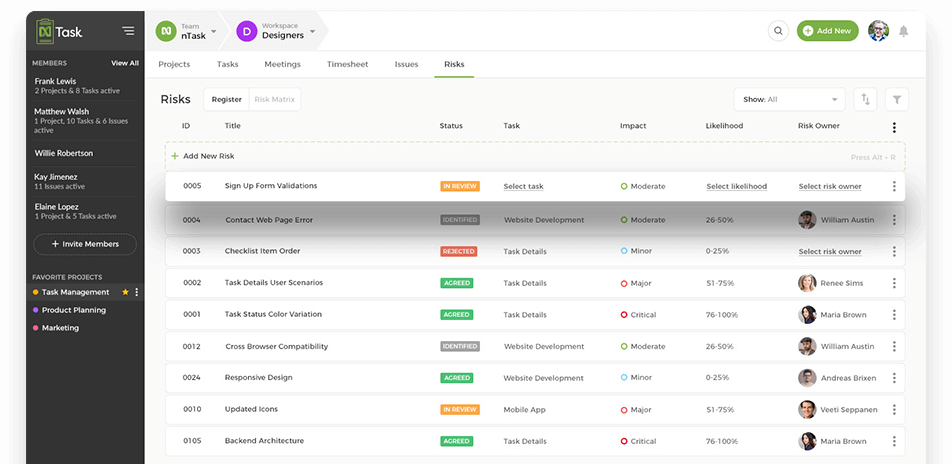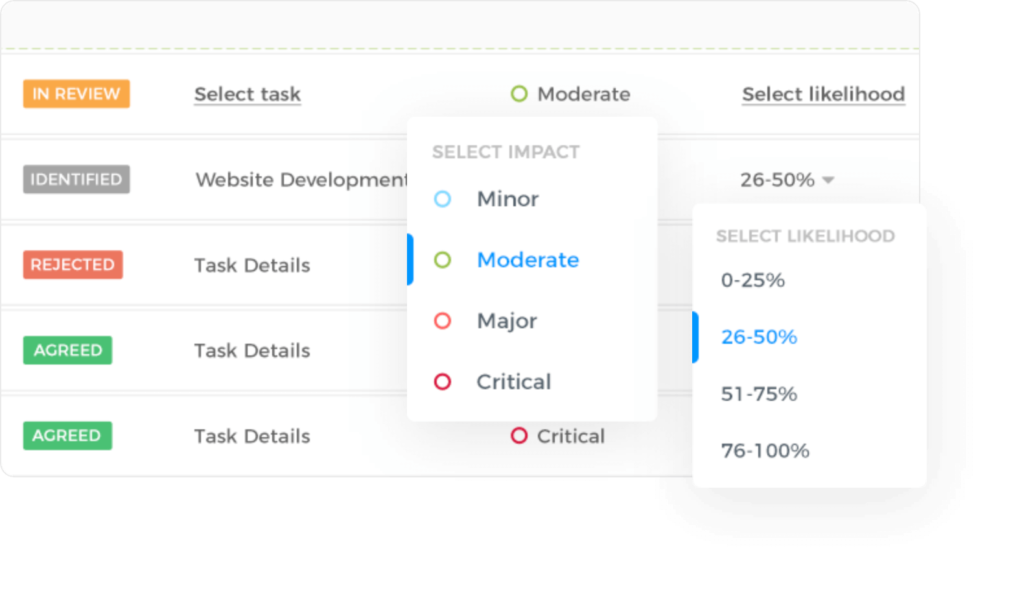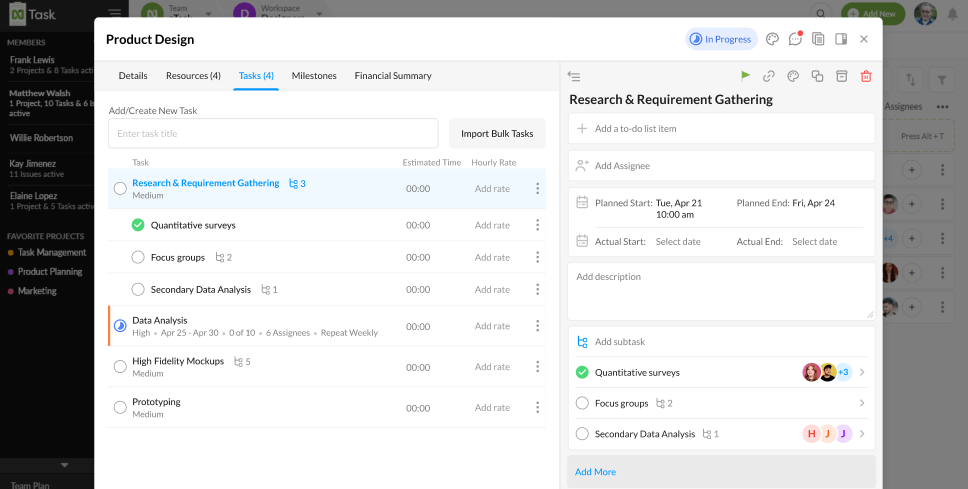What is a contingency plan? It is an actionable plan for when a risk materializes in the form of a problem hindering your progress. Contingency planning is an important part of project management, helping you make sure that things go as planned.
Contingency planning is a part of risk management. Having a plan does not mean that you are not confident in the success of your plan, but it is proof of your meticulousness and dedication. Having a contingency plans plan means that not only do you have potential risks in mind but are also fully prepared to deal with them, if and when they arise.
Having a pre-planned solution is a show of your diligence. With a plan in hand for every risk that you might encounter, you can make sure that your project never goes off-track, and that everything is accomplished within the set time frame.
In this article, we will walk you through the basics of contingency planning in project management. Without any delay, let us jump straight in!
What Is a Contingency Plan?

A contingency plan is defined as a set of actions that can help an organization when it encounters a specific situation. It is also often referred to as plan B since it is only put into action if and when things do not go as planned.
Now, our main concern is, what is a contingency plan in project management? In project management, in particular, a contingency plan refers to an action plan for when a risk actually occurs.
It can be done for both positive and negative events. Any event that poses a threat to the reputation of the organization and its regular work is deemed as a negative event. For example, when a resource suddenly pulls out of a project, tool malfunctions, or the expenditure exceeds the budget. Contingency plans, in such cases, help businesses manage the issues so that the project can return to its pace as soon as possible.
Positive events, in contrast, are those that have a positive impact on the organization. For example, when a project is completed before time, or the company receives a big investment, etc. In such cases, planning helps make the most of the opportunity to make sure it does not go to waste.
Contingency Planning Vs Risk Management
The difference between risk management and contingency planning lies in the fact that risk management focuses on the identification and mitigation of risks. A contingency plan, on the other hand, is an actual strategy to overcome the risk.
Secondly, risk management usually involves mitigation plans. Mitigation plans try to reduce the chances of a risk occurring or try to reduce the negative impact of a risk. Contingency planning, on the contrary, provides a step-by-step solution to manage a risk when it actually occurs.
A mitigation plan is usually implemented at the very beginning of the project. Contingency planning, however, is put in motion once a risk materializes itself.
Related:
All New Risk Matrix, Risk Custom Fields, and Much More
When To Use a Contingency Plan in Project Management?
The following pointers will help you understand the right time to use a contingency plan in project management:
- Contingency plans are not to be made for risks that haven’t been identified. Unless you know a risk, you cannot make a plan for it.
- They can also be made for the benefit of the organization. For example, if incorporating a new tool midway seems necessary then with contingency planning, you can make sure that the process goes smoothly, without any problems whatsoever.
What Are the Necessary Elements of a Contingency Plan?
A contingency plan is your way of making sure that you are ready to encounter any risk and can take on any problem at any time. It also means that you have a proper solution for every possible risk that may arise during the course of the project.
Since it’s your last resort, you have to make sure that there are no loopholes in the plan. Here are a few must-have elements of a contingency plan:
- Probability: There can be a number of risks involved in a single project, but you might not possess the capability to make a contingency plan for each and every one of them. What you can do in such a situation is that analyze all the risks involved, identify the ones that are most likely to occur, and have the highest impact on the progress of your project. Once you have figured it out, make a plan for every scenario that may occur.
- Triggers: Triggers will be the events or activities that will set your plan in motion. An issue might be triggered by one thing or a bunch of different things.
- Response strategy: In your plan, specify what your response strategy will be for each scenario as and when it occurs. this will ensure that no time is wasted, and the project is completed without any delays.
- Notify relevant people: You also have to identify the people who must be informed of the changes in the project. Make sure you know how you will contact them. Also, identify the people who will be responsible for executing the plan.
- Timeline: Create a proper timeline to make sure that the tasks are carried out in proper order and within time.
Creating A Contingency Plan: Step-By-Step Guide
By now, you must be wondering, “how do I make a plan for my project”. Well, you will find all the steps below. Just follow these steps and we are sure you will be able to make a highly efficient plan for your project.
1. Identify The Risks:

The first step in drafting a plan is identifying all the risks that may be at play in your project. For this step, you have to call in your expertise and skills. Identify all the risks involves in the project.
Take help from your peers and seniors too, and build upon their experience. You can also take help from previously completed projects.
Use every possible way to create a list of all the risks you may encounter when working on the project. Once you have compiled a list, you can now start eliminating the ones that are least likely to occur or have a negligible impact on the project. Since you cannot make plans for each and every one of them, you have to rule out the rest and only focus on the ones that are the most important.
now that you have gotten rid of the less important ones, all the risks left are the ones that are the most important and need contingency plans.
You may also like:
The 19 Best Risk Management Software of 2022
2. Prioritize Risks

Of all the risks that you have compiled a list of, there must be some that are more important than the others. Creating a contingency plan for these risks should be your priority.
Identify the risks that have the biggest impact on your project, make them your priority, and start creating a plan to solve them if they actually occur.
You can make plans for other risks too, but high-priority risks need more meticulous planning.
3. Create A Plan

Now that you have everything you need to get started, you can start working on the plans. For each risk that threatens the successful completion of your project, you can come up with a plan to resolve it as soon as it arises.
Here are the key areas that you need to focus on when creating a plan:
- Identify the resources you will be employing for the execution of the plan. Make sure that you have quick access to these resources and can get in touch with them as soon as possible. Also, make sure that you have all the resource management tools, finances, etc. ready at all times.
- You might or might not have specialists to deal with specific scenarios. If you do, then that will give you an edge in the project. If you don’t then consider hiring an external resource for the time being just so you can save time and effort if the need be.
- Whatever plan you execute, make sure that all the people involved are aware of the changes and that you have their approval.
- Once you have everything planned out, go over the plan, again and again, to rule out any risks within the plan. Make sure that the plan is foolproof through and through.
4. Share The Plan
Now, it is time for you to share your plan with the stakeholders as well as your team members. Their input can help you eliminate gaps or loopholes that you may not have noticed.
The people in your team bring their own skill sets to the table. With their skills and experience in the field, you might be able to create a more meticulous plan than you can imagine.
Feedback will help you improve your work, so do not shy away from that. Share your plan and be accepting of criticism and feedback.
5. Review The Plan
Change is inevitable, no matter how accurately you plan. There will always be things that can be improved so go back to your plan again and again and identify areas that can be made better. Review the plan, again and again, to make sure it is as accurate as it can be.
Once you have got a hang of how a contingency plan is made and refined, every next plan you make will be better than the one before it. Every step you take towards improvement will make you more efficient.
Always Have Plan ‘B’
No matter how good or experienced you are in your field, do not jump into a project without a plan ‘B’ i.e., a contingency plan. You cannot just hope that everything will go well in the project.
Even if it does today, it might not tomorrow. And when it doesn’t, your whole project will be thrown in disarray and when that happens, you will need a plan to get yourself back on track, otherwise, all efforts will go down in drown.
You can also use a dedicated tool to make your own plan ‘B’. nTask, for one, offers a dedicated risk management module. With this module, you can not only keep track of all issues but also make contingency plans for resolving these risks.
It also allows you to assign resources, add descriptions, to-do lists, and much more. You can also share the plan with your whole team as well as stakeholders. You can learn more about the tool here.

